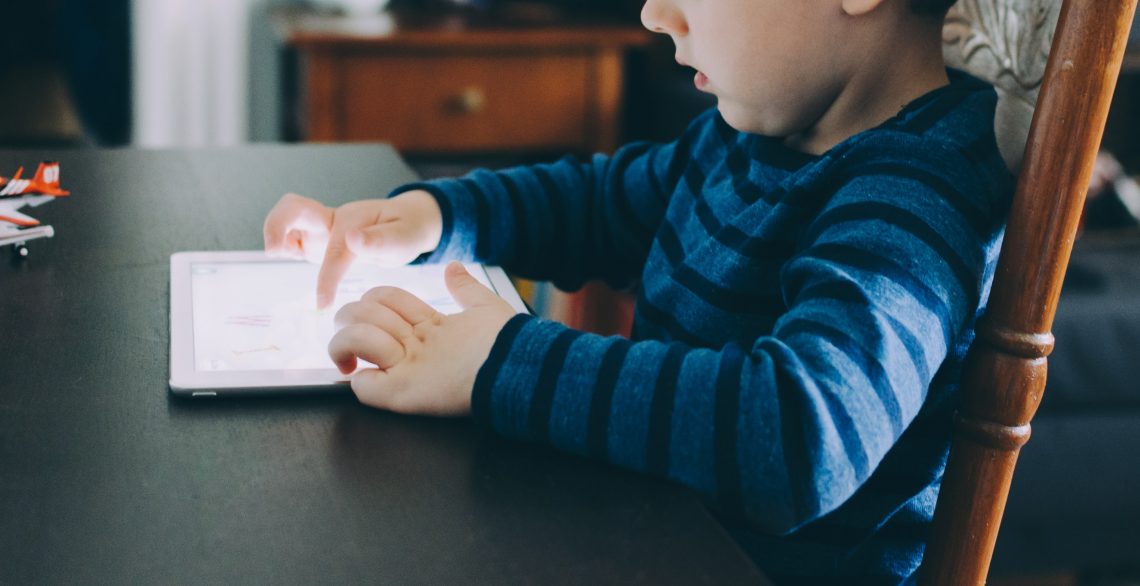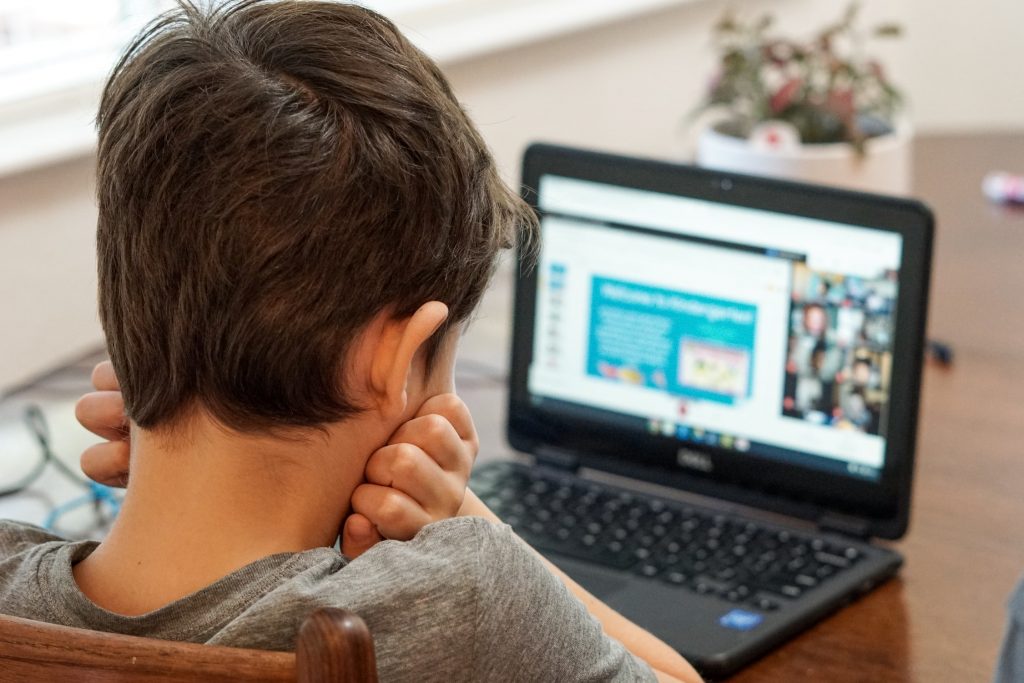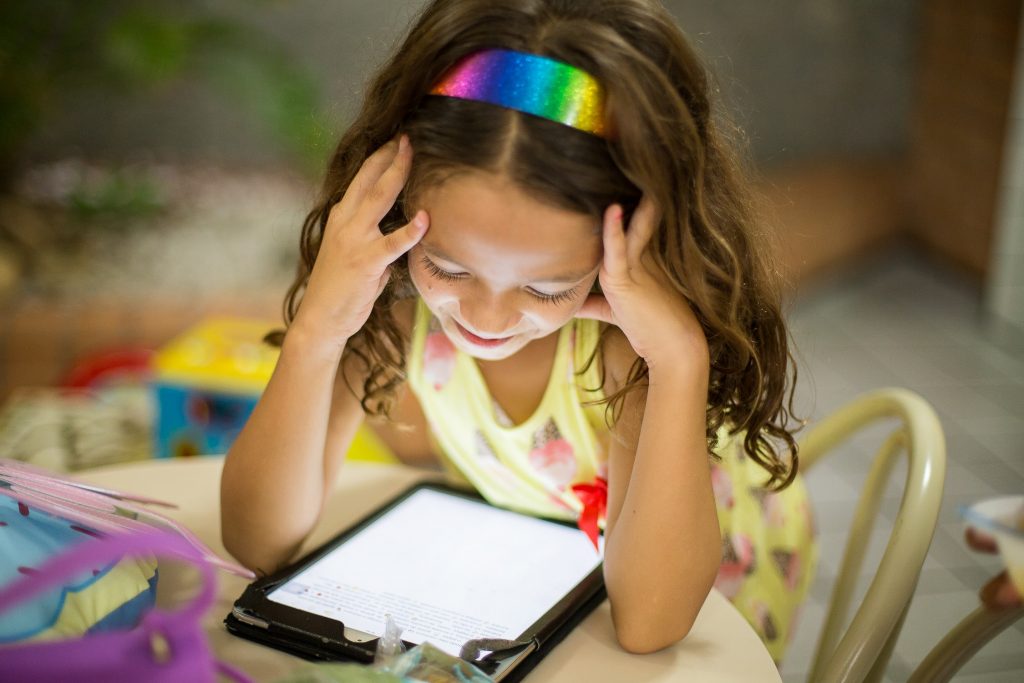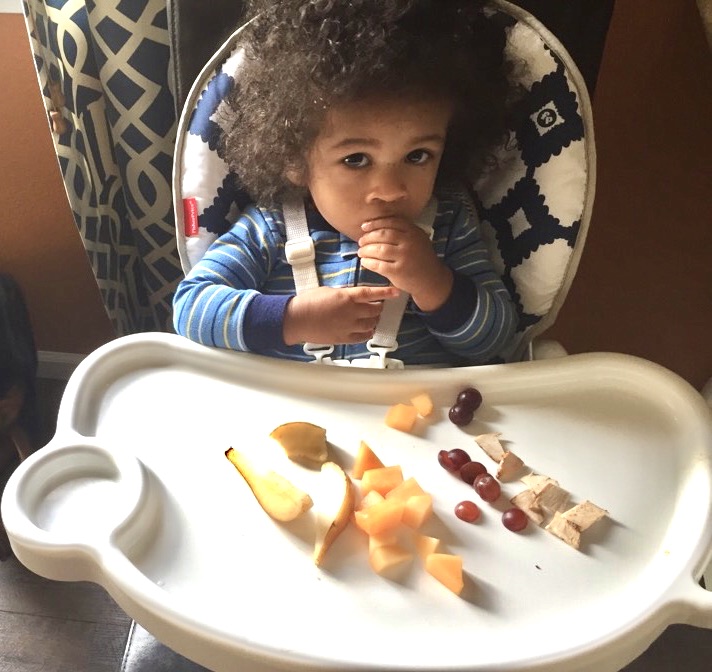
Healthy Screen Time Advice for Parents

Screen time is new for some of us. When I was a kid, my favorite toys were Cabbage Patch Dolls, Raggedy Ann and Andy, Lincoln Logs, and coloring books. As I grew older, my toys advanced into more modern technology like Atari and a Walkman cassette player. In today’s world, children have many more options at their fingertips: video games, tablets, and smartphones. Although these are fascinating toys for children, there are some dangers associated with how much time children are using devices in a day. According to the American Heart Association (AHA), kids and teens ages 8 to 18 spend an average of more than seven hours a day looking at screens. The new warning from the AHA recommends parents limit the time children spend in front of screens for kids to a maximum of just two hours per day. For younger children, ages 2 to 5, the recommended limit is one hour per day.
Limiting time with devices

Limiting children’s time with devices may seem drastic and scary, especially during the Coronavirus pandemic. Parents are working from home, children are being homeschooled (or remote learning), and the screens are a convenient way to keep children busy and entertained. It’s actually a necessity in my home for virtual school, and it’s been a great way to connect with family members who live far away. I’m not banning all screen time nor am I shaming any parent who uses it. In fact, I’m guilty of allowing my children much more screen time than is recommended by the experts, especially in the past few months. However, my husband and I realized our children weren’t just connecting socially with family and friends, or using their devices for educational purposes, so I decided to research what is an appropriate amount of screen time for my children and how to control their use of devices. After all, we as parents are the ones in charge of our children’s screen time. It’s up to parents to set healthy limits for our children’s well-being. “The point is that parents need to be what we call a ‘media mentor.’ We really need to be involved in terms of teaching children that media can be beneficial but this is how you use it in a healthy way,” says cardiologist Dr. Tara Narula.
Active screen time

What is a healthy way to use screens? Some experts call healthy screen time, “active screen time.” Active screen time is when your child is engaged with both mind and body, like on a video chat or an educational video. “Children with healthy screen time boundaries are more likely to be engaged in school and to interact more often with their parents and friends,” according to Pediatric Adolescent Medicine, 2010. It’s important for parents to maximize the amount of active screen time versus passive screen time.
Passive screen time
Passive screen time is basically just sitting in front of a screen watching YouTube videos, TV, or movies without actively using the brain or body. Excessive passive screen time can be detrimental to your child’s health. It can lead to potentially harmful physical and emotional issues for children, including insomnia, depression, and behavioral problems. Again, not all screen time is harmful. That’s why it’s important for parents to manage their child’s active and passive time with devices.

How do we cut back on our child’s passive screen time? Create a schedule and enforce it. Experts believe that children need to have outdoor play time and screen-free zones to improve their mental and physical health. We all know that playing outside is essential to a child’s development. It increases motor skills, lowers body mass index, and improves muscle strength. Overall, playing outside whether it’s a hike in a nearby park, throwing a ball, or climbing a tree will improve their physical health and help build relationships with parents and friends. My family’s daily schedule includes 4 – 5 p.m. outside playtime. Sometimes we go for a bike ride in our neighborhood, and other times the kids want to swing on the play set while I pull weeds. In addition to daily outdoor play time, my husband and I have a rule – OBBB – Only Books Before Bedtime. This means that there are no electronic devices allowed before bedtime – they can read a book until they fall asleep – but no screens. Whatever you decide to do, just make it a point to put down the devices and stick to your schedule.
Activities without screens

Another important tip for parents is to create special screen-free zones in their households by enforcing certain boundaries with screen times. For instance, parents can insist that there are no devices at the dinner table or in the bedrooms. By having these screen-free zones, parents are able to engage with their children and be present in their lives. We do not allow devices at the dinner table – even my husband and I have to put them away. It’s important for us to communicate with our kids during this time every day. And we find that we linger longer at the table after we’re finished eating, just to keep talking. Having that face-to-face interaction with our kids is invaluable. It increases openness and healthy communication between parent and child. Isn’t that what we all want in the end? We desire to have a relationship where our children feel welcome and safe to talk to us about anything. Putting down our devices in certain areas of the home and being present with our kids will contribute to healthy relationships with them.

By encouraging active screen time, limiting the amount of passive screen time, scheduling outdoor playtime and creating device-free zones, parents can manage how devices affects their children’s health and well-being. It’s up to us as parents to schedule our children’s time wisely in ways that will benefit them for years to come. We’d love to hear your feedback on managing your child’s screen time. Connect with us on Instagram @MapsCookingKids or on Twitter @MapsCookingKids. Until next time, Agape, be kind, and happy parenting.





